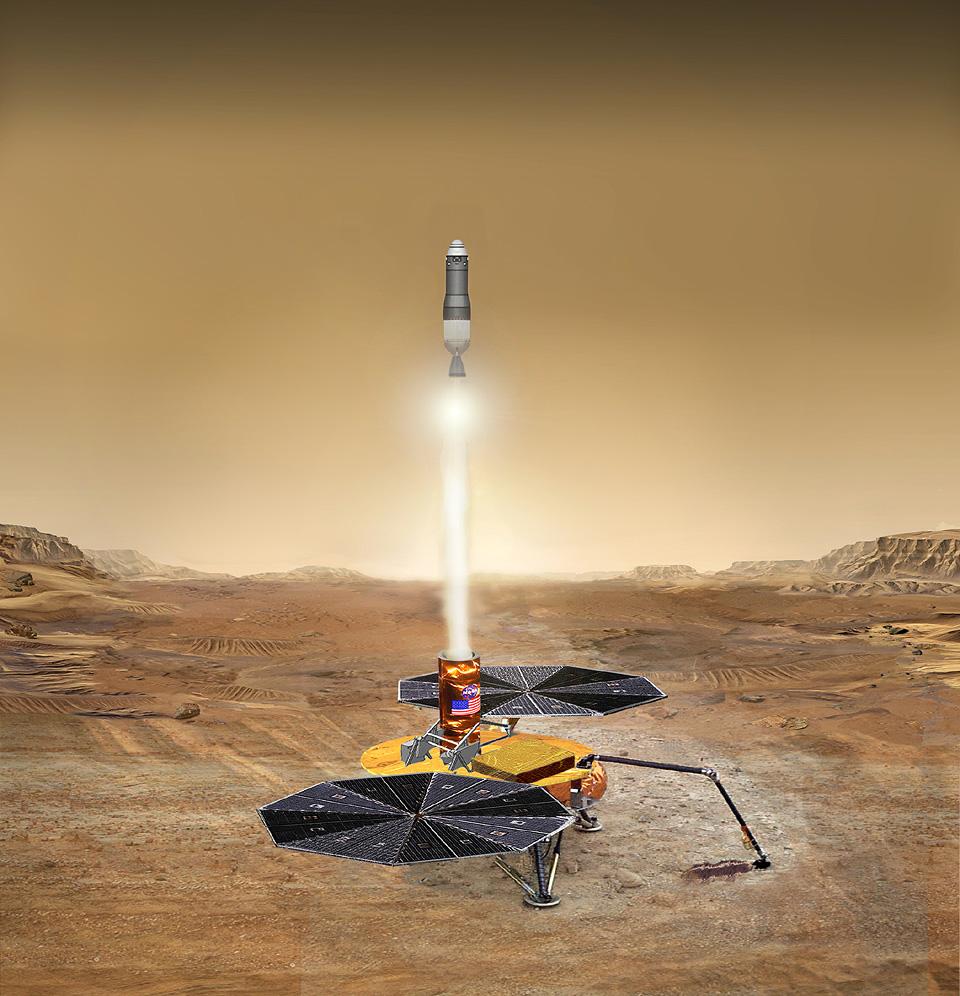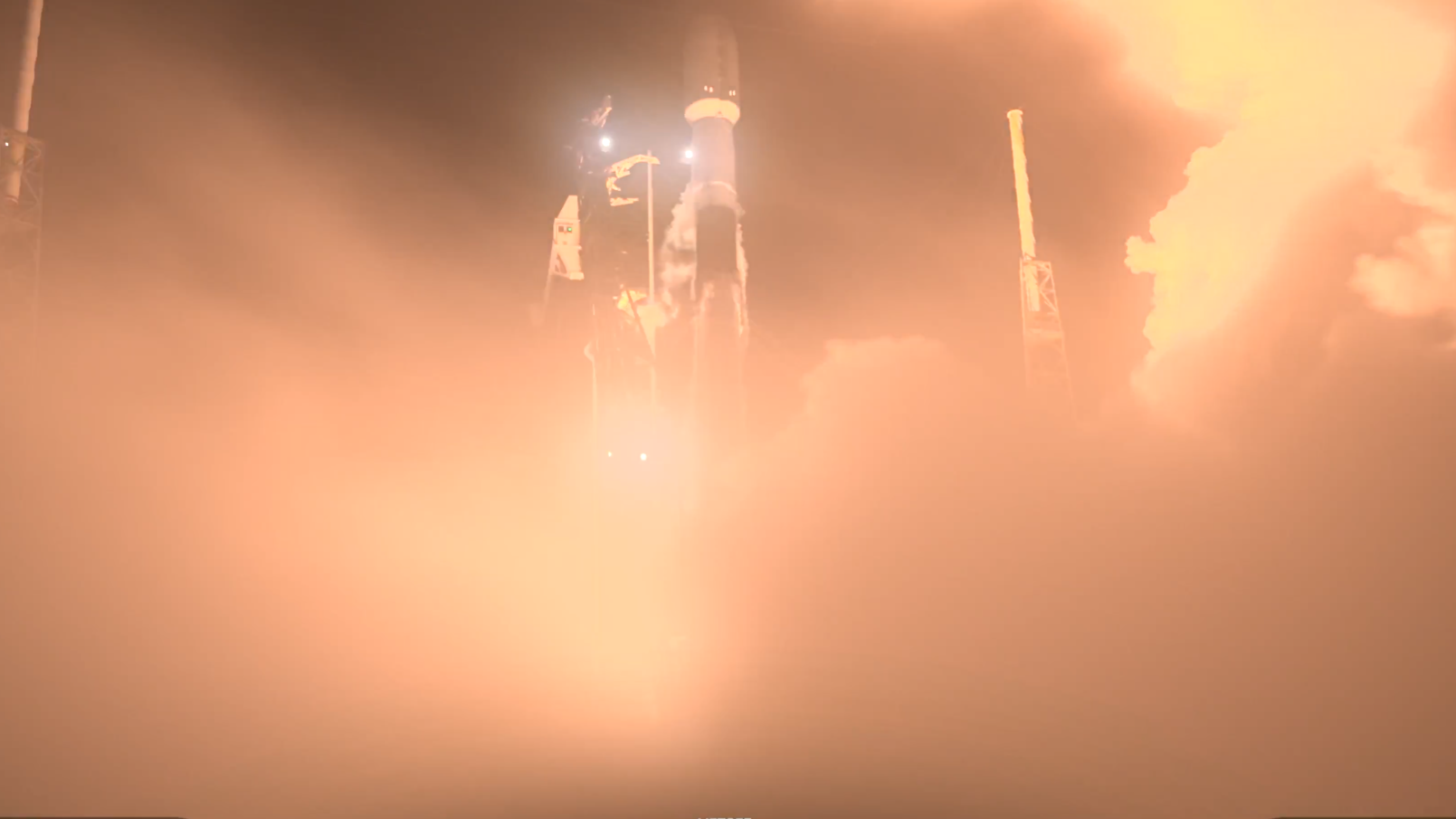
The White House's proposed 2021 federal budget helps keep the ball rolling on one of planetary science's highest priorities, Mars sample return, and funds development of a potential mission that would map water ice on the Red Planet.
The 2021 budget request, which was released yesterday (Feb. 10), allocates $25.2 billion to NASA, about 12% more than the space agency is getting this year. That proposed outlay includes $233 million for "Mars Future Missions," one of which aims to get pristine pieces of the Red Planet to Earth, possibly as early as 2031.
"Mars Future supports the development of the Mars Sample Return (MSR) mission that is planning to enter formulation (Phase A) as early as the summer of FY [fiscal year] 2020," NASA officials wrote in a description of the agency's proposed 2021 allocation.
"In FY 2021, MSR formulation activities include concept and technology development, and early design and studies in support of the Sample Return Lander and the Capture/Containment and Return System," they added. "Mars Future also supports a study of the facility required for handling of returned samples."
Related: The boldest Mars missions in history
Sample collection starts soon
The samples in question will be collected by NASA's Mars 2020 rover, which is scheduled to launch this July and land in February 2021 inside the Red Planet's Jezero Crater. The Mars 2020 team will seek out and collect material deemed to have the potential to preserve ancient biosignatures, if any are to be found at Jezero.
This Red Planet rock and dirt will be sealed in several dozen canisters for future return to Earth, where scientists can interrogate the stuff in detail in labs around the world. (Mars 2020 will also hunt for ancient life on its own in Jezero, using its much more limited instrumentation.)
Breaking space news, the latest updates on rocket launches, skywatching events and more!
The delivery of these samples to Earth will be executed in collaboration with the European Space Agency (ESA), which recently confirmed its financial commitment to this complex endeavor. As currently envisioned, the MSR campaign features two 2026 launches: those of NASA's Sample Return Lander (SRL) mission and ESA's Earth Return Orbiter (ERO).
SRL will carry a small rocket called the Mars Ascent Vehicle (MAV) and an ESA-built Sample Fetch Rover (SRF). The SRF will grab the Mars 2020 samples and haul them back to the MAV (possibly getting an assist in this work from the Mars 2020 rover). The MAV will then launch the samples to Mars orbit, where they'll be snagged by the ERO, which will carry them back toward Earth. The ERO will ultimately jettison the sample-harboring container, which will land in the Utah desert in 2031.
The above is the notional plan; the dates and other details are not official yet.
As the NASA budget document noted, great care will be taken in the handling of the Mars samples once they get here. A Sample Receiving Facility will be built at an as-yet-undetermined location to vet the Red Planet rocks, ensuring that Earth microbes don't contaminate the precious samples (and that any Mars bugs that may be lurking in the canisters don't get out into the Earth environment, either).
Related: Decade of Mars: How the 2020s a new era of Red Planet exploration
Mars Ice Mapper, too
The "Mars Future Missions" line in the 2021 budget request covers more than just sample return, however.
"Also included is funding for a potential collaboration with Canada on the Mars Ice Mapper," NASA officials wrote in the budget document. "The Mars Ice Mapper is a remote sensing mission under study intended to map and profile the near-surface (3-15 meters) water ice, particularly that which lies in the mid-latitude regions, in support of future science and exploration missions."
The Mars Ice Mapper would presumably aid the effort to put astronauts on the Red Planet, which NASA aims to do in the 2030s. The agency hasn't revealed much about this potential mission to date, though another NASA budget document identifies a target launch date of 2027.
The 2021 budget request gives more money to future Mars missions than its immediate predecessors did; the 2020 and 2019 proposed White House budgets allocated $109 million and $50 million to this line, respectively.
And Mars sample return and the Mars Ice Mapper will get more and more money as the 2020s unfold, if the 2021 request is any guide. The request envisions allocating $406 million to Mars Future Missions in 2022, $551 million in 2023, $713 million in 2024 and $775 million in 2025.
But there's an important caveat to this entire discussion: We don't know how good a guide the 2021 budget request will end up being. White House budget requests are just proposals; budgets must be enacted by Congress, which has the power of the purse. Budget requests and enacted budgets are often quite different, so we'll just have to wait and see what legislators approve.
- Bringing pieces of Mars to Earth in 2031: How NASA and Europe plan to do it
- The search for life on Mars (a photo timeline)
- In photos: President Donald Trump and NASA
Mike Wall's book about the search for alien life, "Out There" (Grand Central Publishing, 2018; illustrated by Karl Tate), is out now. Follow him on Twitter @michaeldwall. Follow us on Twitter @Spacedotcom or Facebook.

Join our Space Forums to keep talking space on the latest missions, night sky and more! And if you have a news tip, correction or comment, let us know at: community@space.com.

Michael Wall is a Senior Space Writer with Space.com and joined the team in 2010. He primarily covers exoplanets, spaceflight and military space, but has been known to dabble in the space art beat. His book about the search for alien life, "Out There," was published on Nov. 13, 2018. Before becoming a science writer, Michael worked as a herpetologist and wildlife biologist. He has a Ph.D. in evolutionary biology from the University of Sydney, Australia, a bachelor's degree from the University of Arizona, and a graduate certificate in science writing from the University of California, Santa Cruz. To find out what his latest project is, you can follow Michael on Twitter.
